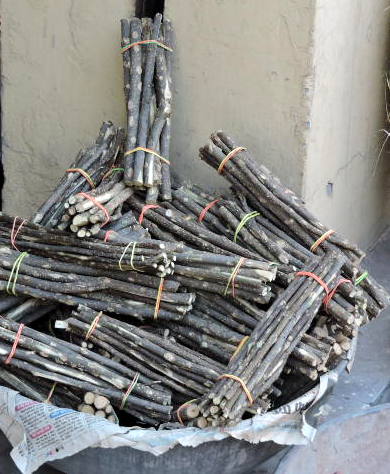|
Garcinia Mannii
''Garcinia mannii'' is a dioecious and evergreen flowering tree in the family Clusiaceae (Guttiferae). The specific epithet (''mannii'') honors German botanist Gustav Mann. Distribution ''Garcinia mannii'' is native to southern Guinea and Liberia east to Nigeria and south to Gabon and western Democratic Republic of the Congo. Description Its leaves are elliptical in shape and slightly rounded, and the flowers have four red petals with yellow-orange centers. They occur on long stems in clusters of 1–2. Mature trees are often densely branched, with the foliage often concealing the trunk. The branches often appear relatively close to the ground. The bark is brown in color and relatively smooth. Uses Due to the chemical composition of the plant, it is used as a chewing stick across its native range. See also *List of Garcinia species ''Garcinia'' is a large genus of flowering plants in the family Clusiaceae. , there are 404 species accepted by Plants of the World Online: ... [...More Info...] [...Related Items...] OR: [Wikipedia] [Google] [Baidu] |
Democratic Republic Of The Congo
The Democratic Republic of the Congo (DRC), also known as the DR Congo, Congo-Kinshasa, or simply the Congo (the last ambiguously also referring to the neighbouring Republic of the Congo), is a country in Central Africa. By land area, it is the List of African countries by area, second-largest country in Africa and the List of countries and dependencies by area, 11th-largest in the world. With a population of around 112 million, the DR Congo is the most populous nominally List of countries and territories where French is an official language, Francophone country in the world. Belgian French, French is the official and most widely spoken language, though there are Languages of the Democratic Republic of the Congo, over 200 indigenous languages. The national capital and largest city is Kinshasa, which is also the economic center. The country is bordered by the Republic of the Congo, the Cabinda Province, Cabinda exclave of Angola, and the South Atlantic Ocean to the west; the Cen ... [...More Info...] [...Related Items...] OR: [Wikipedia] [Google] [Baidu] |
Trees Of Africa
In botany, a tree is a perennial plant with an elongated stem, or trunk, usually supporting branches and leaves. In some usages, the definition of a tree may be narrower, e.g., including only woody plants with secondary growth, only plants that are usable as lumber, or only plants above a specified height. But wider definitions include taller palms, tree ferns, bananas, and bamboos. Trees are not a monophyletic taxonomic group but consist of a wide variety of plant species that have independently evolved a trunk and branches as a way to tower above other plants to compete for sunlight. The majority of tree species are angiosperms or hardwoods; of the rest, many are gymnosperms or softwoods. Trees tend to be long-lived, some trees reaching several thousand years old. Trees evolved around 400 million years ago, and it is estimated that there are around three trillion mature trees in the world currently. A tree typically has many secondary branches supported clear ... [...More Info...] [...Related Items...] OR: [Wikipedia] [Google] [Baidu] |
Flora Of West-Central Tropical Africa
Flora (: floras or florae) is all the plant life present in a particular region or time, generally the naturally occurring ( indigenous) native plants. The corresponding term for animals is ''fauna'', and for fungi, it is '' funga''. Sometimes bacteria and fungi are also referred to as flora as in the terms ''gut flora'' or ''skin flora'' for purposes of specificity. Etymology The word "flora" comes from the Latin name of Flora, the goddess of plants, flowers, and fertility in Roman mythology. The technical term "flora" is then derived from a metonymy of this goddess at the end of the sixteenth century. It was first used in poetry to denote the natural vegetation of an area, but soon also assumed the meaning of a work cataloguing such vegetation. Moreover, "Flora" was used to refer to the flowers of an artificial garden in the seventeenth century. The distinction between vegetation (the general appearance of a community) and flora (the taxonomic composition of a community) wa ... [...More Info...] [...Related Items...] OR: [Wikipedia] [Google] [Baidu] |
Taxa Named By Daniel Oliver
In biology, a taxon (back-formation from ''taxonomy''; : taxa) is a group of one or more populations of an organism or organisms seen by taxonomists to form a unit. Although neither is required, a taxon is usually known by a particular name and given a particular ranking, especially if and when it is accepted or becomes established. It is very common, however, for taxonomists to remain at odds over what belongs to a taxon and the criteria used for inclusion, especially in the context of rank-based (" Linnaean") nomenclature (much less so under phylogenetic nomenclature). If a taxon is given a formal scientific name, its use is then governed by one of the nomenclature codes specifying which scientific name is correct for a particular grouping. Initial attempts at classifying and ordering organisms (plants and animals) were presumably set forth in prehistoric times by hunter-gatherers, as suggested by the fairly sophisticated folk taxonomies. Much later, Aristotle, and later still ... [...More Info...] [...Related Items...] OR: [Wikipedia] [Google] [Baidu] |
Flora Of Africa
Flora (: floras or florae) is all the plant life present in a particular region or time, generally the naturally occurring ( indigenous) native plants. The corresponding term for animals is ''fauna'', and for fungi, it is '' funga''. Sometimes bacteria and fungi are also referred to as flora as in the terms ''gut flora'' or ''skin flora'' for purposes of specificity. Etymology The word "flora" comes from the Latin name of Flora, the goddess of plants, flowers, and fertility in Roman mythology. The technical term "flora" is then derived from a metonymy of this goddess at the end of the sixteenth century. It was first used in poetry to denote the natural vegetation of an area, but soon also assumed the meaning of a work cataloguing such vegetation. Moreover, "Flora" was used to refer to the flowers of an artificial garden in the seventeenth century. The distinction between vegetation (the general appearance of a community) and flora (the taxonomic composition of a community) wa ... [...More Info...] [...Related Items...] OR: [Wikipedia] [Google] [Baidu] |
Garcinia
''Garcinia'' is a genus of flowering plants in the family (biology), family Clusiaceae native to the Sundaland bioregion of Asia, America, Australia, tropical and southern Africa, and Polynesia. The number of species is disputed; Plants of the World Online (POWO) recognise up to 400. Commonly, the plants in this genus are called saptrees, mangosteens (which may also refer specifically to ''Garcinia mangostana''), or garcinias, and is one of several plants known as by the name "monkey fruit". The genus is named after French botanist Laurent Garcin (1683–1751). Trees of many species from this genus tend to grow deep in forested areas where other plants grow nearby. They are threatened by habitat destruction, and at least one species, ''Garcinia cadelliana, G. cadelliana'', from South Andaman Island, is almost or even completely extinct already. Description ''Garcinia'' species are evergreen trees and shrubs, dioecious and in several cases apomictic. Among neotropical ''Garcini ... [...More Info...] [...Related Items...] OR: [Wikipedia] [Google] [Baidu] |
List Of Garcinia Species
''Garcinia'' is a large genus of flowering plants in the family Clusiaceae. , there are 404 species accepted by Plants of the World Online: A B C D E F G H I J K L M N O P Q R S T U V W X Y Z References {{Reflist Garcinia, *L Lists of plant species, Garcinia Lists of trees, Garcinia ... [...More Info...] [...Related Items...] OR: [Wikipedia] [Google] [Baidu] |
Chewing Stick
A teeth-cleaning twig (in Hindi: ''datwoon'') is an oral hygiene tool made from a twig from a tree. It can help to prevent tooth decay and gum disease. History Chew sticks are twigs or roots of certain plants that are chewed until one end is frayed. This end can be used to brush against the teeth, while the other end can be used as a toothpick. The earliest chew sticks have been dated to Babylonia in 3500 BCE and an Egyptian tomb from 3000 BCE; they are mentioned in Chinese records dating from 1600 BCE In the Ayurvedas around 4th century BCE and in Tipitaka, in the Buddhist Canon around the 5th century BCE in India. The Indian way of using tooth wood for brushing is presented by the Chinese monk Yijing (635–713 CE) when he describes the rules for monks in his book: A wide variety of plants can be used as . In Africa, chew sticks are made from the tree ''Salvadora persica'', also known as the "toothbrush tree". In Islam, this tree is traditionally used to create a chew st ... [...More Info...] [...Related Items...] OR: [Wikipedia] [Google] [Baidu] |
Glossary Of Botanical Terms
This glossary of botanical terms is a list of definitions of terms and concepts relevant to botany and plants in general. Terms of plant morphology are included here as well as at the more specific Glossary of plant morphology and Glossary of leaf morphology. For other related terms, see Glossary of phytopathology, Glossary of lichen terms, and List of Latin and Greek words commonly used in systematic names. A B ... [...More Info...] [...Related Items...] OR: [Wikipedia] [Google] [Baidu] |
Garcinia Manu 03
''Garcinia'' is a genus of flowering plants in the family Clusiaceae native to the Sundaland bioregion of Asia, America, Australia, tropical and southern Africa, and Polynesia. The number of species is disputed; Plants of the World Online (POWO) recognise up to 400. Commonly, the plants in this genus are called saptrees, mangosteens (which may also refer specifically to ''Garcinia mangostana''), or garcinias, and is one of several plants known as by the name "monkey fruit". The genus is named after French botanist Laurent Garcin (1683–1751). Trees of many species from this genus tend to grow deep in forested areas where other plants grow nearby. They are threatened by habitat destruction, and at least one species, '' G. cadelliana'', from South Andaman Island, is almost or even completely extinct already. Description ''Garcinia'' species are evergreen trees and shrubs, dioecious and in several cases apomictic. Among neotropical ''Garcinia'' several species are dioecious (''G ... [...More Info...] [...Related Items...] OR: [Wikipedia] [Google] [Baidu] |







